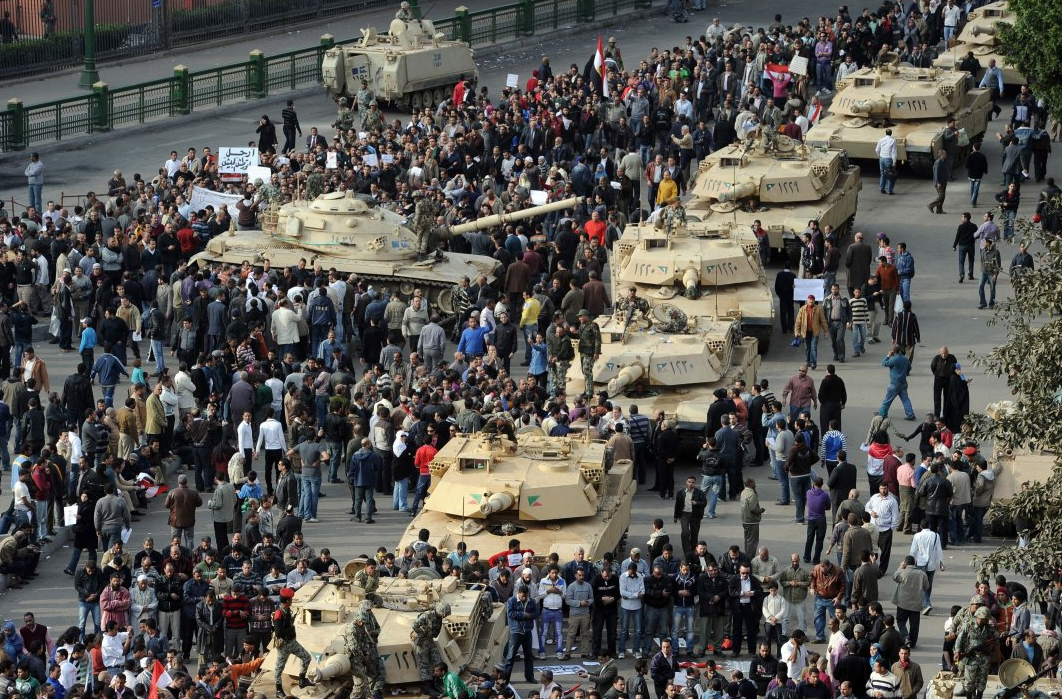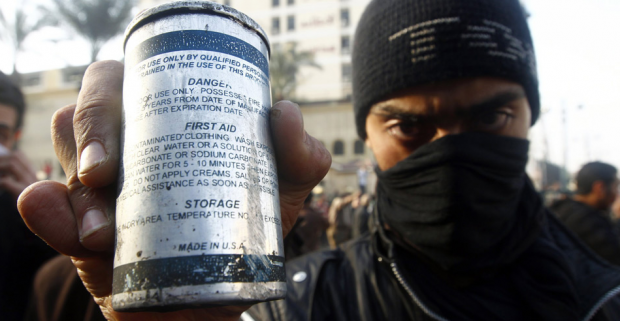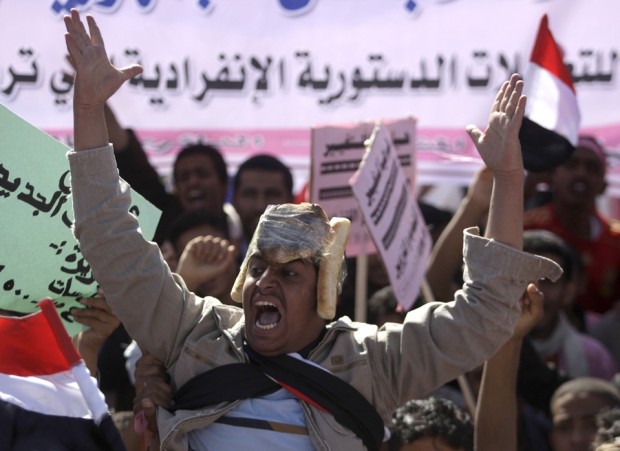Notes
Egyptian "Stability" (Many Tanks from US)
One of the interesting facets of photographs is how they can contain information that often goes unnoticed. The same is true in the discussion of empire. For those living at the center of the system, the operation and effects of the imperial state might as well be invisible, for they have been neutralized by long periods of habituation and denial. Thus, one thinks nothing when presidents speak of the need for “stability” in a region, not questioning how that is code for “continued support of authoritarian rule.” Or one is genuinely puzzled why demonstrators in a small country far away would burn an American flag–what have we ever done to them? Even when caught up in the euphoria and instinctive identification with a democratic revolution, it is easy to overlook the evidence that at the end of the day geopolitical relationships may prove to be, well, stable.
Above is one of many photographs from Egypt’s uprising that features army tanks surrounded by the demonstrators who could have been or still might become victims of a military assault. As John Lucaites pointed out on Monday, the images draw on a rich iconography of political upheaval capturing elements that are obviously key in this uprising yet still not fully understood. The ongoing, often micro-political negotiation between the people and the army seems to be crucial to whether the demonstrations succeed or are betrayed and crushed. That would be reason enough for the photograph.
Even so, you might wonder why no one bothers to talk about the tanks themselves. They are symbols, sure, but they also are real tanks having specific designs and manufacturers. And that’s where some of the “missing” information is actually there to be seen. The tanks in the long line are versions of the M1 Abrams. I’m not positive about the tank on the left, but I’m fairly sure it’s an M60 Patton. Want to guess where they are produced?
Tanks are not cheap, of course, but Egypt has the benefit of $1.3 billion in US military aid every year. Although President Obama’s recent statements on behalf of regime change are a good thing, don’t think they is going to change the client status of the Egyptian state or the role of the Egyptian army, its officer corp properly schooled by the US, in maintaining that relationship. As Secretary of State Hillary Clinton and others have already said, the military aid is not going to change.
And so a photograph of a democratic moment is also a photograph of an imperial relationship. From there, its a small step to answering the question of “why they hate us.”
Unlike the army, the Egyptian police have not been playing nice. Gassing, beating, shooting, spying on, and probably torturing the demonstrators, they have revealed in a few days what they have been doing continuously for many years. The basic reason that many people hate the US is that we maintain dictators who run police states. We support those autocrats by providing the enormous advantages in money, weapons, information, and just about anything else they need to suppress their own people. And the people notice.
So it is that we have the photograph above: If you look at the figure on the right, you might see the incarnation of a Fox News nightmare: the terrorist, black on brown, his face covered in defiance, his eyes sharply focused in hate. (Or you can see a young man wearing a scarf to protect himself against tear gas and perhaps the secret police.) But look at the tear gas canister on the left. It will have been fired by the police into the crowd; its effects range from painful to terrifying to debilitating. And look at the bottom of the can: “Made in USA.”
— Robert Hariman
(Photographs by Miguel Medina/AFP-Getty Images and Yannis Behrakis/Reuters)




Reactions
Comments Powered by Disqus